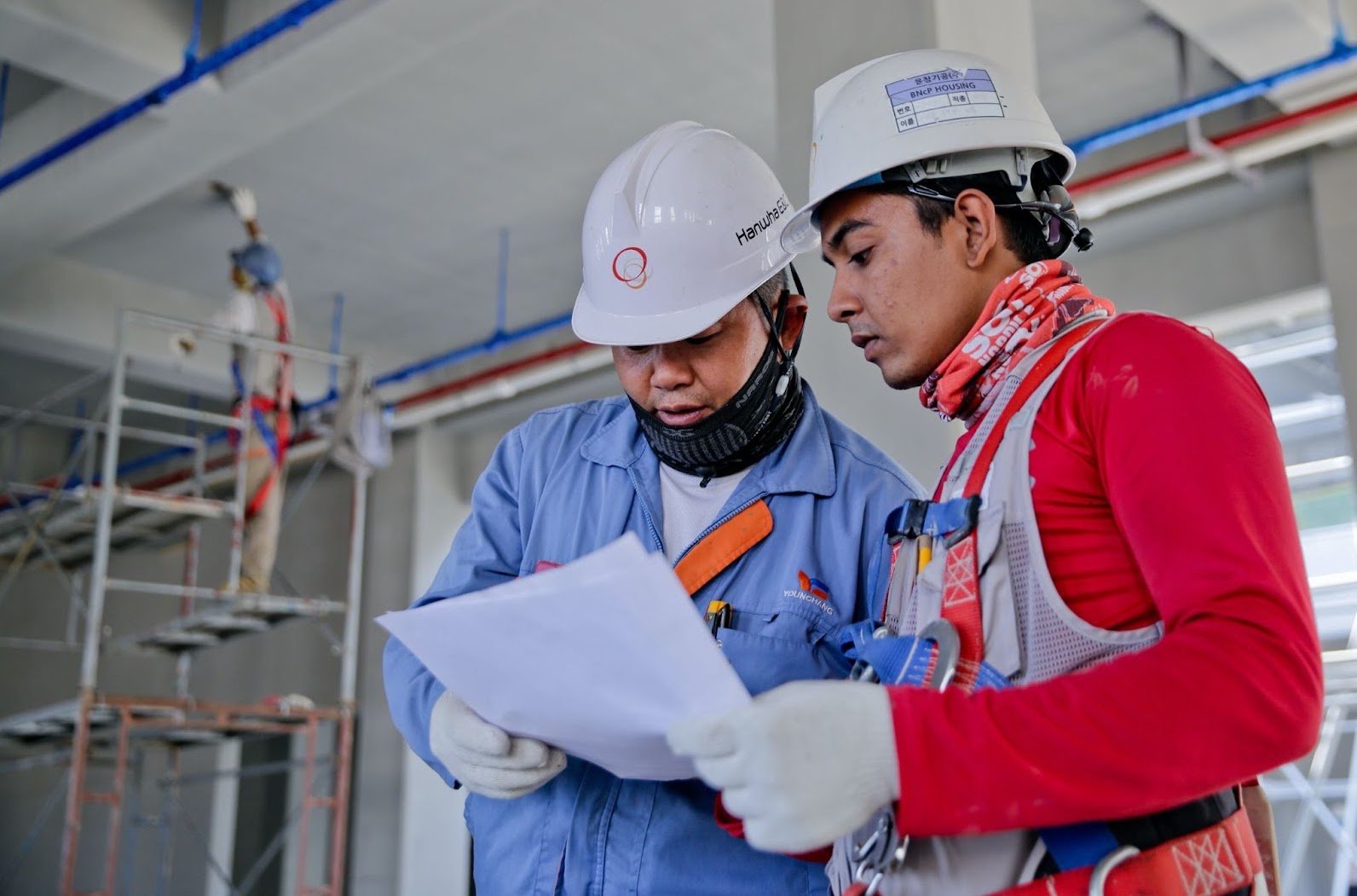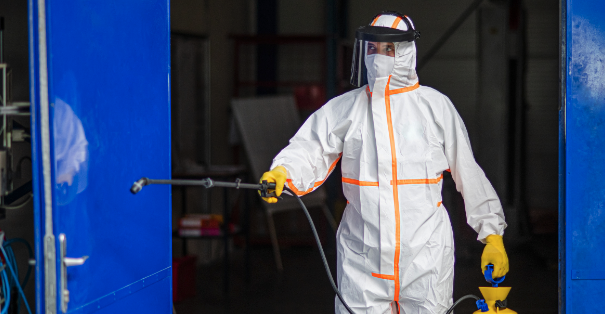SafeDE News
Smarter workplaces are safer workplaces. SafeDE is your resource for OSHA news, regulation changes, recalls, and everything to keep your business safe.
Back Safety Tips: Prevent Injuries in the Workplace
Back injuries are common among workers from various industries including nursing, retail, and manual labor. In 2016, the U.S. Bureau of Labor Statistics found that 38.5% of all musculoskeletal issues experienced by employees at work were back-related. Fortunately, most back injuries can be avoided by prioritizing safety in our work habits and the overall workplace environment.
Given the prevalence of back injuries, every working individual should be well-informed about the typical causes of back pain, how to prevent them at work, and how to treat them.
Common Causes of Work-Related Back Injuries
Back injuries affect the bones, muscles, nerves, intervertebral discs, joints, and ligaments of the back. They may stem from a single traumatic incident or a result of years of cumulative damage leading to more severe injuries. Below are some of the most common causes of back injuries in the workplace.
Poor body posture
Poor posture places undue stress on the spine. This could result in spinal misalignment, nerve compression, and the tightening of certain muscles. Prolonged sitting jobs can significantly weaken the back and core which contributes to more pain and damage.
Fatigue
When the body is tired, muscles are less able to support the spine, resulting in poor posture and strain on the back. Fatigue can also reduce one's awareness of proper body mechanics which increases the risk of injury.
Overexertion
Lifting or moving heavy objects can cause muscle and joint stress. Exposure to this level of activity can cause inflammation and micro-tears that may lead to immediate discomfort or evolve into a back injury if not addressed.
Health and Lifestyle Factors
Sedentary behavior can contribute to back pain and injury. Lack of exercise weakens the core muscles and compromises spine support. Carrying extra weight, particularly in the midsection, also adds strain to the back. Smoking could also contribute to impaired bone healing and spinal disc degeneration, further worsening back-related injury.
Environmental Hazards
The workplace environment can also contribute to the cause of back injuries. For example, improper ergonomic setups, like desks that are too high or chairs that don't provide enough lumbar support, can promote poor posture. Workplaces that don't prioritize health and safety training can leave workers unaware of the risks of back injuries.
Back Injury Prevention in the Workplace
Now that we have identified the common causes of back injuries, here are some preventative measures we can take to reduce the risk of them happening:
Positioning and Ergonomics
- When seated, maintain approximately 90-degree angles at the hips, knees, and elbows to promote comfort and reduce the risk of musculoskeletal strain.
- Adjust chairs and workstations to support a neutral spine position.
- Use proper lumbar support when sitting.
- Position frequently used items within arm's reach to minimize reaching and twisting.
- Consider using a sit-stand workstation to change positions throughout the day.
Body Mechanics for Lifting
- Bend your body at the knees and hips, not at the waist.
- Keep objects close to the body.
- Turn by moving your feet instead of twisting your torso.
- Get help if the object is too heavy or awkward to lift by yourself.
Safety in the Work Environment
- Maintain a clutter-free environment to avoid accidents that may cause trips or falls.
- Use appropriate personal protective equipment (PPE) for tasks that may involve exposure to hazards including back support belts when lifting heavy objects.
- Wear protective, non-slip footwear.
- Use non-slip flooring in areas where spills or moisture may be present to prevent slips and falls, which can lead to back injuries.
Energy Conservation
- Use mechanical support such as dollies, wheelbarrows, lift trucks, and skid loaders for easier transport and reduced physical strain.
- Carrying heavy loads all at once can put excessive strain on your back, arms, and hands. Taking smaller trips can help reduce the risk of injury and muscle fatigue.
- Push heavy materials instead of lifting them.
- Use tools and equipment that reduce the need for bending, reaching, or heavy lifting.
- Rotate tasks to avoid doing the same motions repeatedly.
- If available, request help from a coworker to assist with strenuous tasks.
- Take frequent breaks.
Lifestyle Changes
- Ensure you get adequate rest and sleep outside of work hours as fatigue from lack of sleep can make you more susceptible to back injuries.
- Regularly engage in exercises that target and strengthen the core.
- Maintain a healthy diet to reduce excess weight around your midsection.
Exercise
- Incorporate aerobic training into a well-rounded fitness routine to strengthen core muscles and alleviate any existing back discomfort.
- Stretch the muscles that are most involved in repetitive tasks, such as the lower back, shoulders, and neck.
- Strengthen your core muscles to provide additional support to the spine.
Back-related injuries are a constant concern in most workplace environments. However, the adoption of preventative measures such as proper body mechanics, ergonomic workspaces, safe lifting techniques, and lifestyle changes can significantly reduce the risk of these injuries.
Employers should also prioritize safety by providing training and maintaining a hazard-free work environment. By taking these steps, individuals and organizations can prevent not just back injuries, but all the other types of injuries in the workplace.
Frequently Asked Questions (FAQs)
How can I protect my back when lifting heavy items?
Use proper lifting technique by bending at your hips and knees, engage your leg muscles, avoid twisting, and consider assistance or mechanical aids for very heavy items. Regularly exercise your core muscles, maintain good posture, and seek medical attention if you experience any pain or discomfort after lifting.
What kind of training is required to prevent work-related back injuries?
Employees should receive training in ergonomics, proper lifting techniques, manual handling, safety awareness, and job-specific precautions. Regular refresher training, core strengthening exercises, and a safety-focused culture are essential components of a comprehensive injury prevention program.
Are there OSHA guidelines for back safety in the workplace?
OSHA does not have specific regulations solely dedicated to back safety, but it provides general guidelines and standards that help prevent back injuries in the workplace.
How can employers promote an injury-free workplace when it comes to back safety?
Employers are encouraged to implement ergonomic principles, safe lifting practices, and maintain a hazard-free work environment, with a focus on reducing strain on the back.
Get SafeDE News
Workplace safety for all businesses.
SafeDE provides FREE comprehensive onsite surveys for small and medium sized private sector establishments to identify potential workplace hazards, improve safety and health management systems, and assist in voluntary compliance with federal OSHA regulations.
Related News
.png)
Corrective vs. Preventive Actions: Understanding the Difference
-1.png)
Preventing Ergonomic Injuries: Tips and Strategies
-1.png)
Essential Tips to Prevent Heat Illness in the Workplace

Understanding DART Rate: Calculation, Formula & Meaning
.png)
Lockout Tagout Training: Essential Safety Program

The 5 Rules of Effective Incident Reporting

Essential PPE for Staying Safe and Comfortable in Hot Work Environments
-1.png)
Recognizing Warning Signs of Heat Illness at Work
-1.png)



